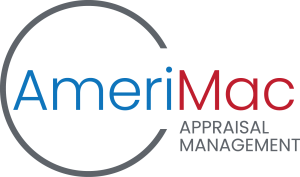
- 877-241-5144
- M-F: 8am to 8pm
Getting a mortgage for a home purchase is exciting but comes with financial responsibilities. Private mortgage insurance (PMI) is often required when the down payment is less than 20% of the purchase price. PMI adds to your monthly payment and delays homeownership. However, there are strategies to eliminate PMI, including getting an appraisal. This blog post explores private mortgage insurance, its impact on your mortgage, strategies to eliminate it, and the appraisal process. AmeriMac can assist you throughout the appraisal process for a smooth PMI removal journey.
Private mortgage insurance, commonly known as PMI, is a type of mortgage insurance that safeguards lenders against the risk of borrower default. Mortgage lenders typically require it for loans with a down payment below 20% of the home’s purchase price. PMI serves as protection for the lender, as it provides financial coverage in case the borrower cannot fulfill their mortgage payments. Understanding the basics of private mortgage insurance is crucial for homeowners looking to remove this additional expense from their mortgage payments.
Private mortgage insurance (PMI) protects lenders from borrower default on mortgage payments. It is required when the down payment is less than 20% of the purchase price, allowing borrowers to obtain loans with a lower down payment. However, PMI is a cost borne by the borrower, not the lender.
PMI details, such as cost and duration, vary based on the lender and loan program. Payments are typically included in the monthly mortgage payment and increase housing expenses. The cost of PMI is a percentage of the loan amount, ranging from 0.3% to 1.5% annually, depending on credit score. Understanding your credit score is crucial for managing PMI costs and mortgage expenses.
Private mortgage insurance (PMI) does not protect the borrower but provides financial protection to the lender in case of default. PMI is required until the loan balance exceeds 80% of the home’s original value. Removing PMI reduces the borrower’s monthly mortgage payment.
Lenders typically mandate PMI for mortgages with less than a 20% down payment. This insurance safeguards the lender in case of borrower default. Understanding why PMI is obligatory enhances financial literacy and aids in grasping essential mortgage terms.
Homeowners must understand the implications of Private Mortgage Insurance (PMI). PMI, a requirement when the down payment is less than 20%, affects your mortgage in various ways. It adds to the cost of homeownership by increasing monthly payments and can hinder personal finance goals. If you’ve paid the principal balance below 80% of the home’s original value, PMI can typically be removed. This process involves getting a new appraisal to determine the home’s current value and ensuring it meets the lender’s requirements under the Homeowners Protection Act.
Calculating between 0.3% and 1.5% of the initial loan annually, private mortgage insurance (PMI) expenses factor into your monthly mortgage payment. Potentially tax-deductible, recognizing PMI costs is crucial for making well-informed choices. Understanding the breakdown aids in financial planning and optimizing your resources efficiently.
Understanding the influence of Private Mortgage Insurance (PMI) on your monthly payments is pivotal in financial planning. PMI incrementally raises your monthly mortgage payment until a specific equity threshold is met, impacting your housing expenses over time. Successfully managing your monthly payments, including making extra payments to reach that equity threshold sooner, requires thoughtful consideration of PMI’s effects. By vigilantly monitoring fluctuations in your monthly payments due to PMI, you enhance your financial management skills, fostering better control over your finances.
Leveraging increased property value might lead to PMI elimination. Enhanced home equity from rising values can lower the loan-to-value ratio, potentially facilitating the removal of PMI. Evaluating your home’s appreciation impact is crucial for strategic cost-saving measures.
Automatic PMI cancellation occurs when specific lender requirements are met, such as having a good payment history and not having unpaid contract work on the property. Requesting PMI cancellation can be initiated by contacting your loan servicer once you believe you have enough equity in your home to meet the lender’s criteria. Using a new appraisal to remove PMI involves an appraisal of your home’s current value to prove that the LTV ratio has decreased due to an increase in your home’s original value. Refinancing is another option, allowing you to secure a lower rate or switch from an FHA loan to a conventional mortgage.
Automatic cancellation of private mortgage insurance (PMI) is a relief for many homeowners. When you hit the halfway point of your loan, some loans automatically end PMI. Attaining a specific loan-to-value ratio triggers automatic PMI termination, making it a crucial milestone in your mortgage journey. Homeowners must grasp the criteria for this cancellation to be financially prepared. This hassle-free termination spares you from unnecessary expenses. Understanding the conditions for automatic PMI cancellation is crucial for your financial well-being.
When you’ve built up enough equity in your home, you can ask for PMI cancellation, a significant step towards cost savings. It’s essential to follow the correct procedures diligently when requesting this cancellation. Submitting a written request to your mortgage servicer is typically the process to initiate PMI removal, although a phone call may also suffice. Understanding these steps and taking action empowers homeowners to manage their finances effectively. Navigating the PMI cancellation process can save on your mortgage expenses.
By leveraging a recent home appraisal, homeowners can accurately reassess their property’s value to eliminate PMI potentially. This valuable step involves getting a professional appraisal to negotiate the removal of PMI. Utilizing an updated appraisal allows homeowners to determine if their property value has increased enough. By tapping into a new home appraisal, individuals can work towards eliminating PMI by showcasing their property’s value growth.
Refinancing your home loan is a strategic option when considering ways to eliminate PMI. By securing a new loan through refinancing, homeowners can leverage any increase in their home’s value to remove PMI effectively. It is crucial to carefully assess the benefits of refinancing to eliminate PMI, as it provides an opportunity to not only enhance loan terms but also rid yourself of PMI obligations. Exploring refinancing possibilities can result in substantial long-term financial advantages, particularly in the realm of PMI removal.
Understanding the appraisal process is crucial in the journey to remove PMI. Knowing when and how to appraise your home is significant in this process. A clear understanding of your home’s appraised value helps assess the equity and determine if you have enough to eliminate PMI. Following the specific lender’s requirements and guidelines is essential to navigate this appraisal process effectively. Ensuring that you meet the criteria for appraisal can streamline the path to removing PMI without any unnecessary delays.
Considering a home appraisal is essential before removing PMI. A home appraisal is advised when you suspect an increase in your home’s value or have undertaken significant home upgrades. To eliminate PMI, consider getting an appraisal at the halfway mark of your loan term, as different rules apply for canceling PMI depending on your mortgage company. Assessing your home’s value through an appraisal is critical in PMI removal.
Acquiring a professional appraisal is crucial to eliminating PMI. The process entails evaluating your home’s value by engaging a certified appraiser for a comprehensive property assessment. Accuracy in the appraisal report is paramount in reflecting your property’s actual value, influencing PMI removal eligibility significantly. Making sure the appraisal captures the essence of your property’s worth is essential for a successful appraisal procedure.
Are you exploring refinancing as a solution to eliminate PMI? When your home equity rises, consider this route. Refinancing offers the potential for lower rates and PMI removal. Evaluate if refinancing aligns with your goal of PMI elimination.
AmeriMac provides expert assistance throughout home appraisals, ensuring precise and dependable appraisals. Collaborating with AmeriMac can simplify your PMI removal process by streamlining the journey. Count on AmeriMac for professional advice on home valuations, making the process of removing PMI smoother. Their appraisal support helps facilitate a seamless transition toward PMI elimination.

The fully staffed customer service department at Amerimac Appraisal Management is available Monday through Friday, 8 a.m. EST to 8 p.m. EST.
SIGNUP FOR OUR MONTHLY NEWSLETTER:
Client Testimonials
© Amerimac 2025. Privacy Policy. Website by Whiteboard Marketing.